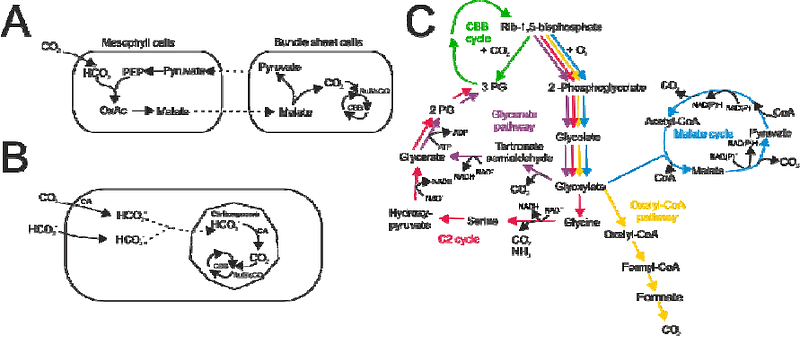A native phosphoglycolate salvage pathway of the synthetic autotrophic yeast Komagataella phaffii

A native phosphoglycolate salvage pathway of the synthetic autotrophic yeast Komagataella phaffii
Baumschabl, M.; Mitic, B. M.; Troyer, C.; Hann, S.; Ata, O.; Mattanovich, D.
AbstractSynthetic autotrophs can serve as chassis strains for bioproduction from CO2 as a feedstock to take measures against the climate crisis. Integration of the Calvin Benson Bassham (CBB) cycle into the methylotrophic yeast Komagataella phaffii (Pichia pastoris) enabled it to use CO2 as the sole carbon source. The key enzyme in this cycle is ribulose-1,5-bisphosphate carboxylase/oxygenase (RuBisCO) catalyzing the carboxylation step. However, this enzyme is error prone to perform an oxygenation reaction leading to the production of toxic 2-phosphoglycolate. Native autotrophs have evolved different recycling pathways for 2-phosphoglycolate. However, for synthetic autotrophs, no information is available for the existence of such pathways. Deletion of CYB2 in the autotrophic K. phaffii strain led to the accumulation of glycolate, an intermediate in phosphoglycolate salvage pathways, suggesting that such a pathway is enabled by native K. phaffii enzymes. 13C tracer analysis with labeled glycolate indicated that the yeast pathway recycling phosphoglycolate is similar to the plant salvage pathway. This orthogonal yeast pathway may serve as a sensor for RuBisCO oxygenation, and as an engineering target to boost autotrophic growth rates in K. phaffii.